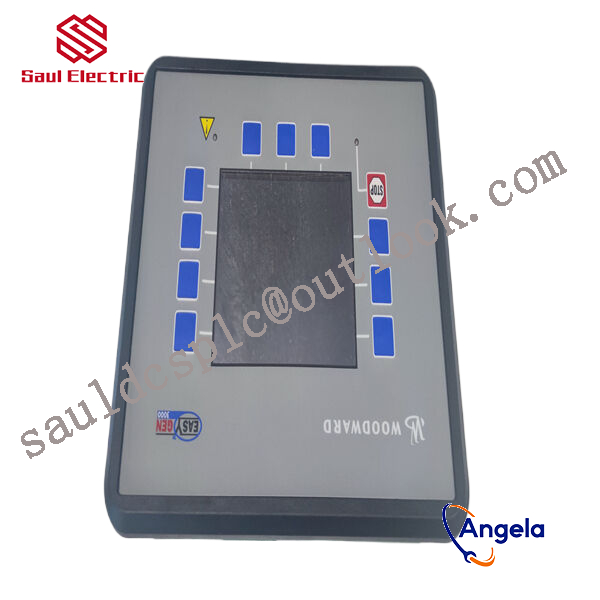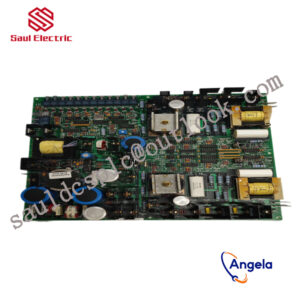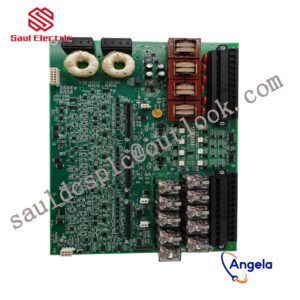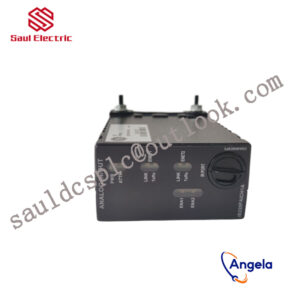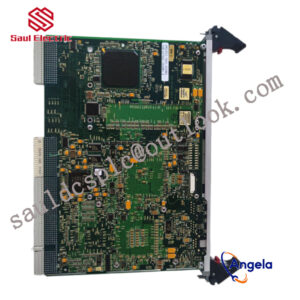Description
8516-051 Controller debugger generator WOODWARD
Non differential regulation is mainly used for constant speed control and is suitable for single machine operation or multiple prime movers working together in an isolated power grid. Differential regulation provides more control flexibility.
further enhancing its performance and application range.
rich additional functions, and high-precision output signals. Whether it is in the fields of generator sets, compressors, pump stations, or ships and locomotives, it can effectively ensure the stable operation of equipment within the set range.
power measurement level 1, editable screen, multi interface toolkit connection, etc. All details can be found in Woodward easyYgen manual 37582A
The rated operating temperature range of this model is -20 to 70 ° C; the rated temperature range of the LT model is -40 to 70 ° C, suitable for outdoor use.
8516-051 is equipped with a monitor (not available on the 3100 model) and is designed for front panel installation.
The built-in HMI has a color LCD and soft keys (now with dedicated buttons) for direct control of the 8516-051 device. Multi level password protection can prevent unauthorized changes.
The generator set has four operating modes and the option to configure a manual circuit breaker control device.
How to use 8516-051?
What is 8516-051 used for?
8516-051 Customs Code
Design and implementation of variable frequency transmission system based on ABB hardware architectureintroductionWith the increasing development of transmission technology and the increasing demand for actual use, variable frequency transmission systems have been widely used.As a Fortune 500 company in the world, ABB is a leader in the fields of power and automation technology and has strong capabilities in control systems, high-voltage, medium-voltage and low-voltage frequency conversion technology and transmission technology. Therefore, this article mainly relies on ABB”s control, frequency conversion and transmission technology, and uses related hardware products to design and implement the frequency conversion transmission system.To truly design and implement a usable variable frequency drive system, the entire system must be fully equipped, conveniently operable and compatible with a wide range of needs, so that it can be used without changing the control method and operation. According to the actual control needs, that is, combining frequency converters with different performances and variable frequency motors with different speeds or torques to quickly build and realize a variety of control requirements.1 System design purpose and compositionThe design purpose of this system is to control ABB inverters through local and remote control methods and complete 4 independent channels of closed-loop speed control to drive different test objects to rotate.The entire control system consists of the following four main components: remote control computer, panel industrial computer (touch screen), PLC and speed-regulating frequency converter. The system design block diagram is shown in Figure 1.In order to ensure the accuracy of motor speed control, an encoder module is added. The PLC can obtain the feedback of the rotary encoder in the frequency converter through the ProfibusDP protocol. The speed control is performed through the frequency converter for internal PID closed-loop control.2 System hardware implementation2.1 Control some hardwareThe control part of the hardware mainly refers to the sum of hardware that supports operators to use the equipment directly or indirectly and complete the functions of the equipment. Its main hardware includes computer control terminal, touch screen control terminal, PLC control unit, other auxiliary circuits and measurement and control components.2.2 Transmission hardwareThe transmission hardware mainly refers to the total number of equipment that can relatively independently perform a complete transmission function. Its main hardware includes frequency converters, variable frequency motors (configured with rotary encoders as needed) and other auxiliary circuits. Among them, the selection of motors and frequency converters should be based on the principle of selecting the motor first and then selecting the frequency converter. details as follows:First, according to the tangential speed at which the object under test is to complete rotation, select the motor speed according to the following formula:Secondly, choose based on several other important basic parameters of the motor, such as system hardness, torque, weight, etc. This system uses ABB”s variable frequency motor.Finally, select an appropriate frequency converter based on the motor power. In addition, the actual situation of the object being tested must also be taken into consideration, such as whether the rotating load belongs to the heavy-load usage of the frequency converter, etc.3Software systemSystem software includes three major categories in total, namely computer control software, touch screen software and PLC software. Among them, the PLC software, as the underlying software, is responsible for the interaction with the computer control software and touch screen software on the upper side, and the interaction with the frequency converter on the lower side. Therefore, from the architecture of the entire software system, it can be defined as a host and slave computer structure.3.1 System development platformThe software system has two control methods: remote and local. The development platforms for the three major categories of software are Windows operating system, LabVIEW[4] integrated development environment, CodesysV2.3, and CP400.3.2 System software architectureThe software of the entire system is divided into three types, namely remote control software, PLC control software and local control software. Among them, the remote control software runs under the Windows operating system and is developed under the LabVIEW integrated development environment; the PLC control software is developed under the CodesysV2.3 programming environment; the local control software runs on the touch screen computer and is developed under the CP400 environment. The relationship between the three software is shown in Figure 2.
5462-948 From Woodward, USA
8200-1302 WOODWARD Speed Sensor Full Series
PCM128-HD9906-707 Generator Parts Speed Controller 2301A Speed
5461-774 WOODWARD Speed Sensor Full Series
5462-518 Controller debugger generator WOODWARD
8440-2256 WOODWARD Speed Sensor Full Series
5464-025 WOODWARD 2301A Speed Control Controller
5466-352 Generator Parts Speed Controller 2301A Speed
5462-948 WOODWARD 2301A Speed Control Controller
9907-162 Controller debugger generator WOODWARD
5461-780 WOODWARD generator set speed control board
5463-450 WOODWARD generator set speed control board
5464-114 From Woodward, USA
8915-886 Controller debugger generator WOODWARD
8290-180 Generator Parts Speed Controller 2301A Speed
9905-462 WOODWARD generator set speed control board
5460-842 WOODWARD 2301A Speed Control Controller
9907-126 WOODWARD 2301A Speed Control Controller
5453-279 WOODWARD Speed Sensor Full Series
8516-039 Controller debugger generator WOODWARD
9907-345 From Woodward, USA
9907-076 WOODWARD Speed Sensor Full Series
5417-173 WOODWARD 2301A Speed Control Controller
8915-712 WOODWARD Speed Sensor Full Series
8440-1849 WOODWARD generator set speed control board
5466-315 WOODWARD generator set speed control board
2301E WOODWARD generator set speed control board
5461-086 WOODWARD generator set speed control board
8516-042 WOODWARD generator set speed control board
9905-211 Generator Parts Speed Controller 2301A Speed
8272-464 WOODWARD Speed Sensor Full Series
5466-041 WOODWARD generator set speed control board
8200-1301 Controller debugger generator WOODWARD
5466-329 From Woodward, USA
5441-693 From Woodward, USA
9907-1177 WOODWARD 2301A Speed Control Controller
9907-1228 WOODWARD generator set speed control board
5466-318 WOODWARD 2301A Speed Control Controller

